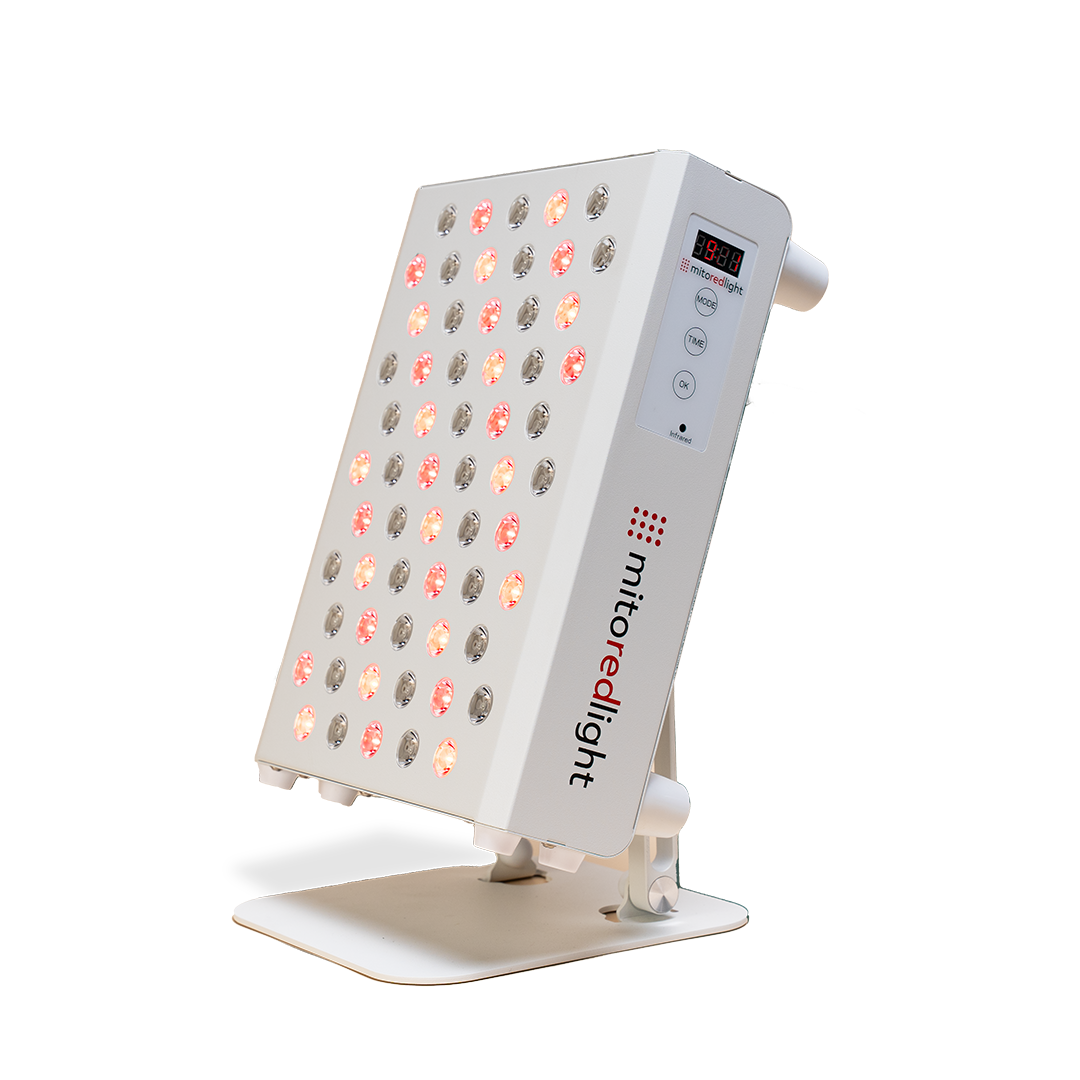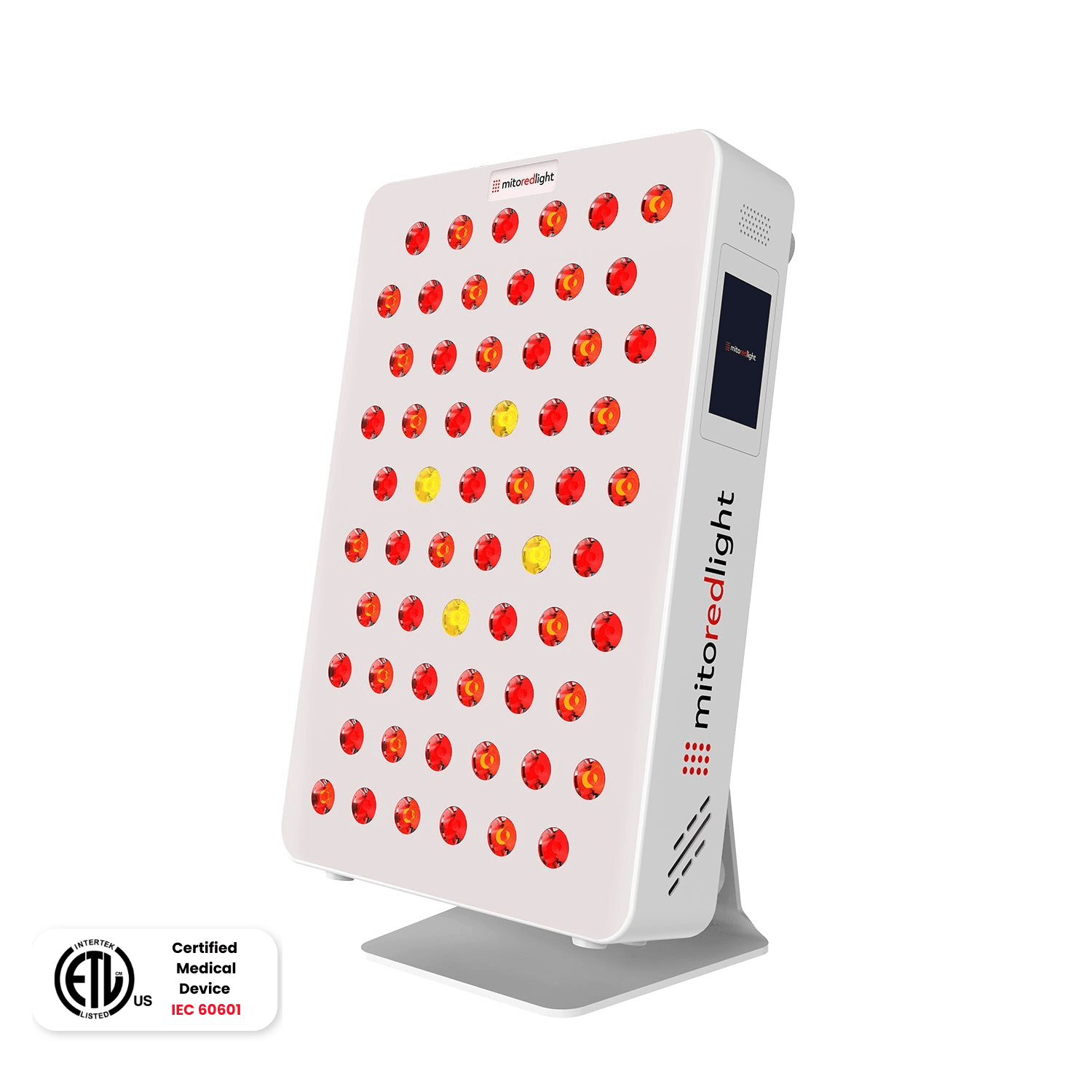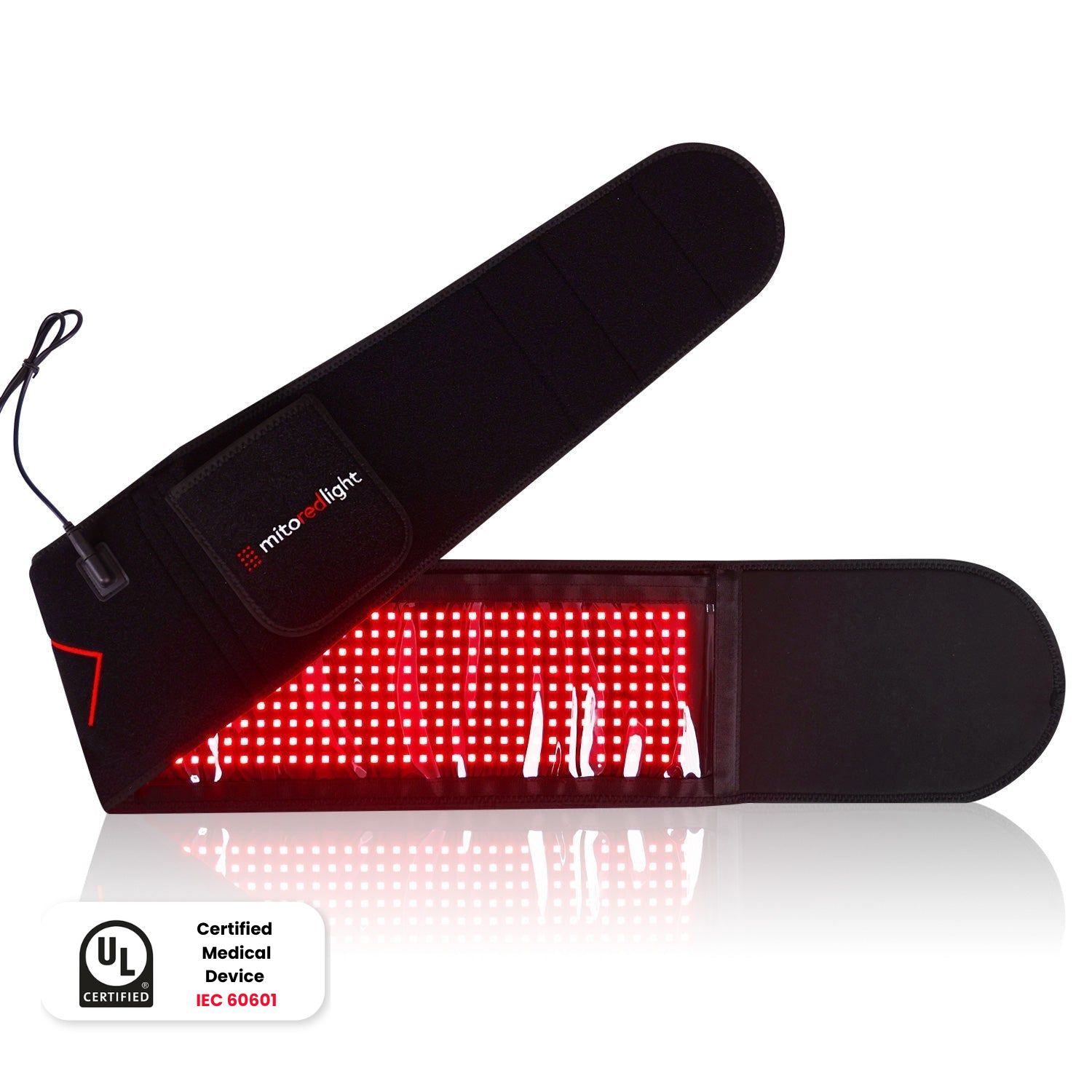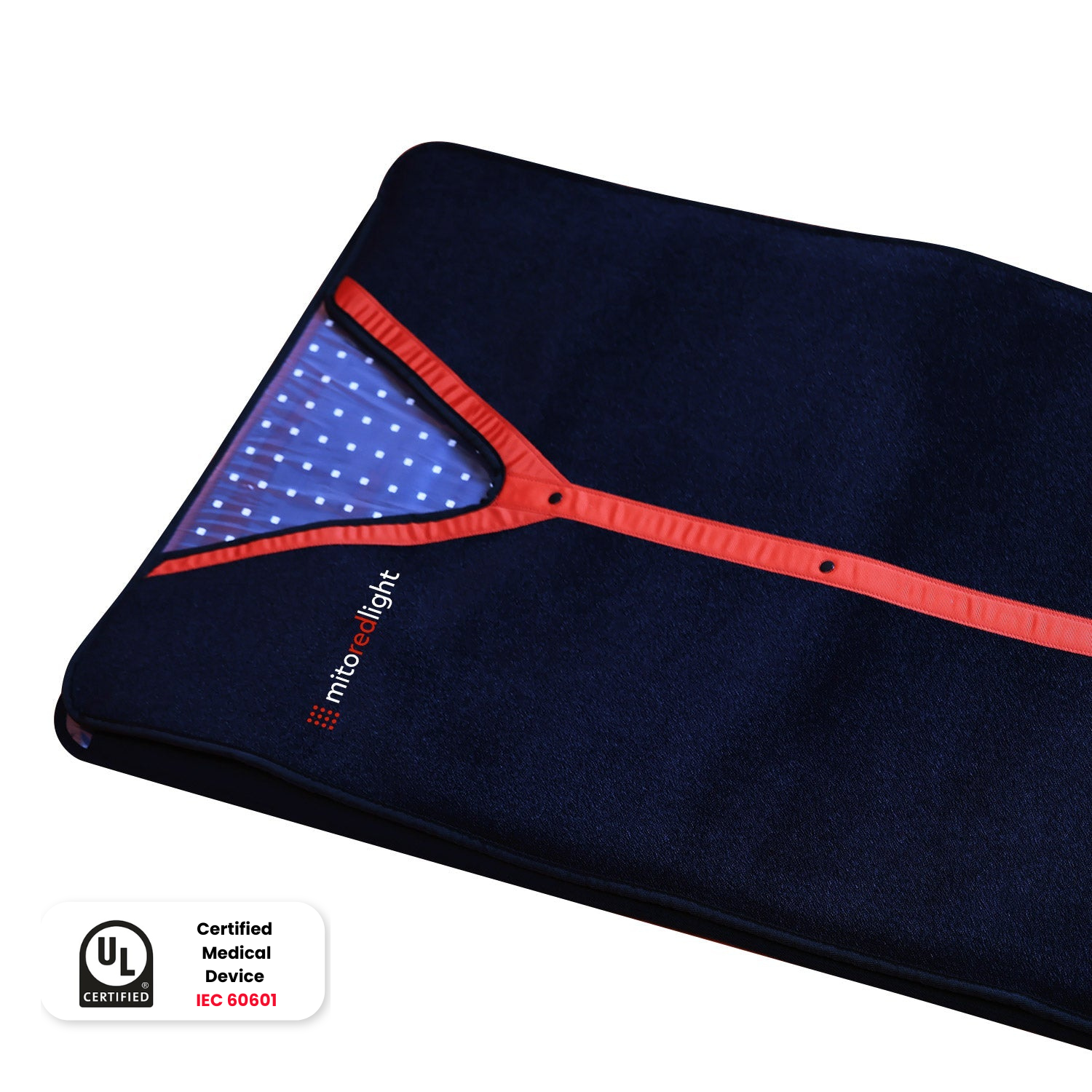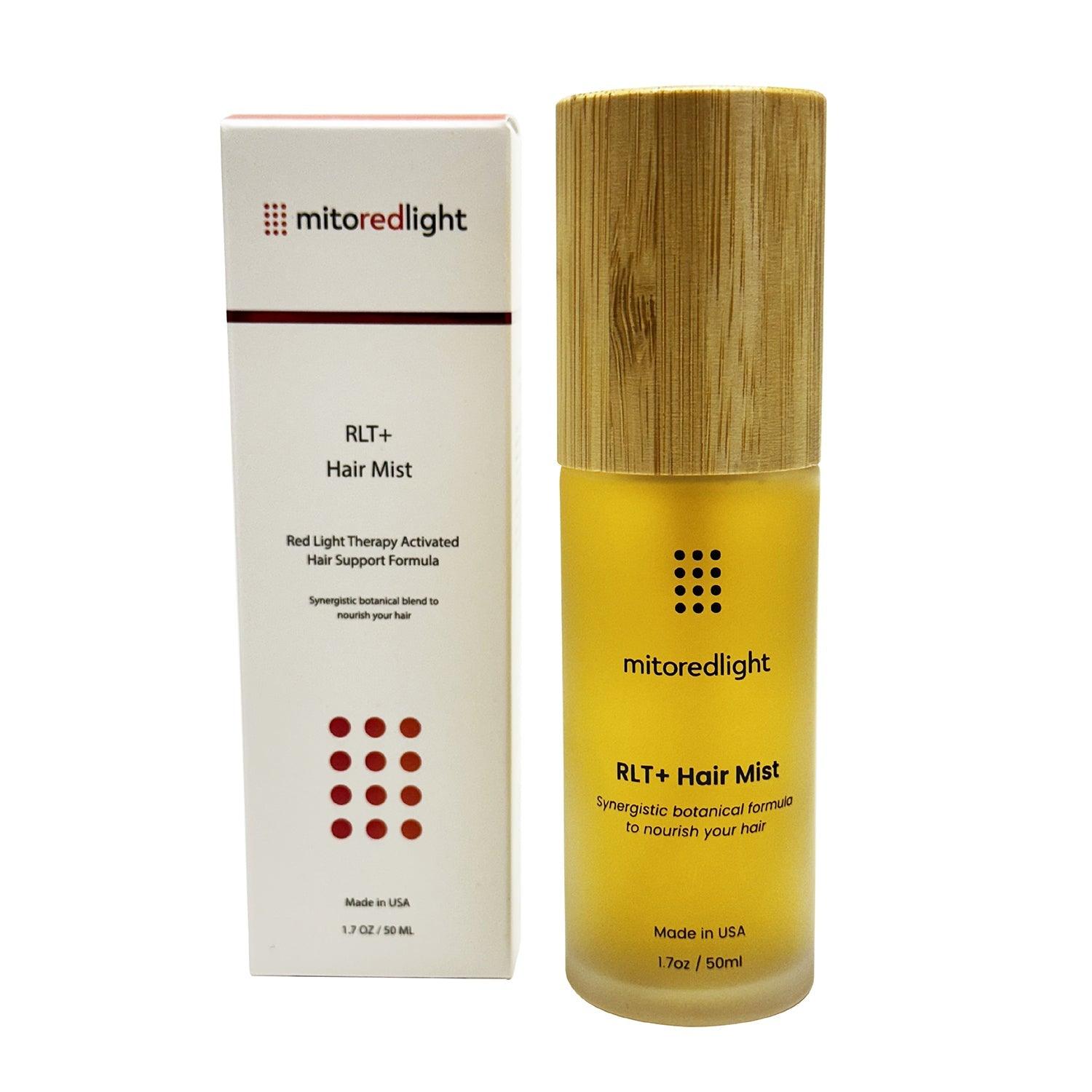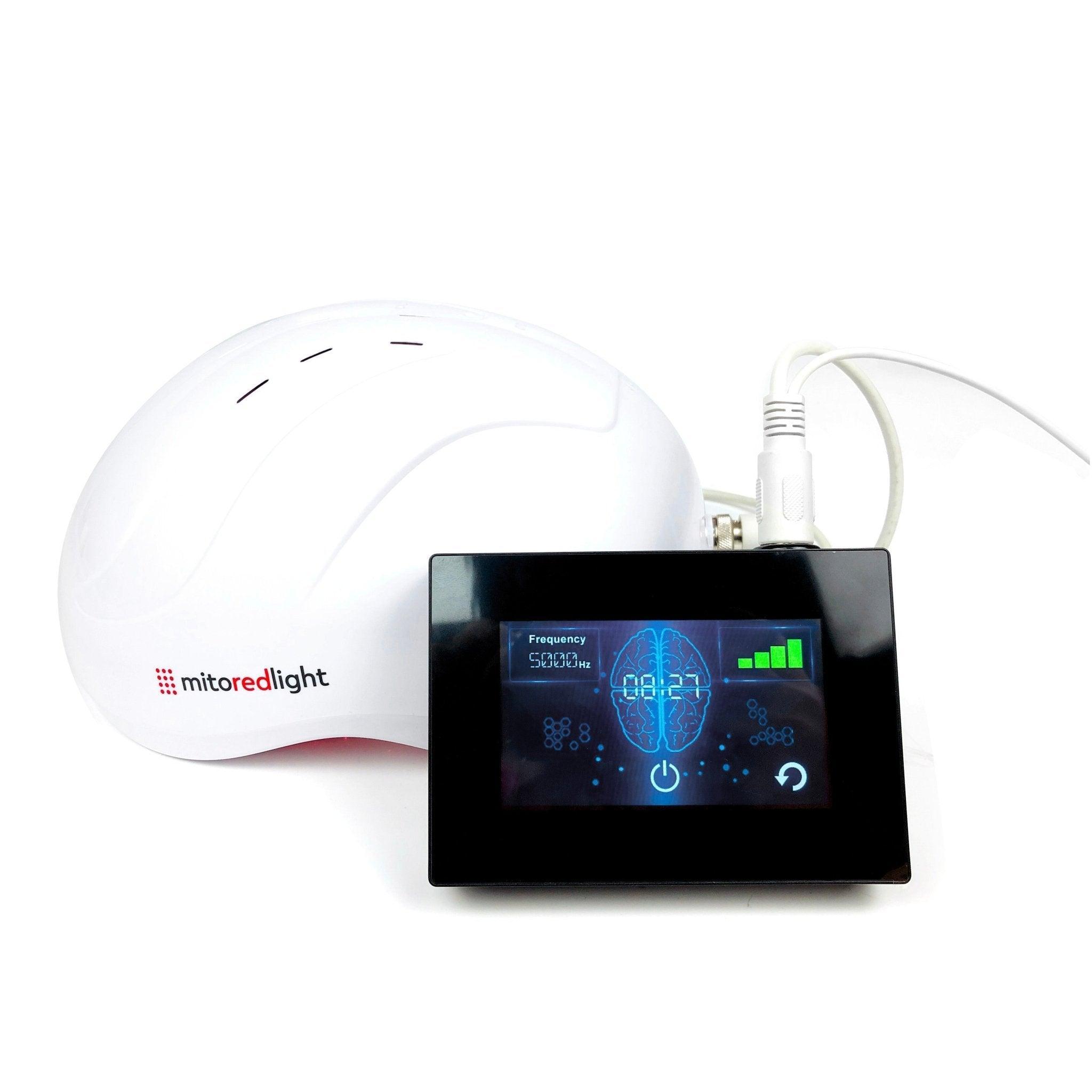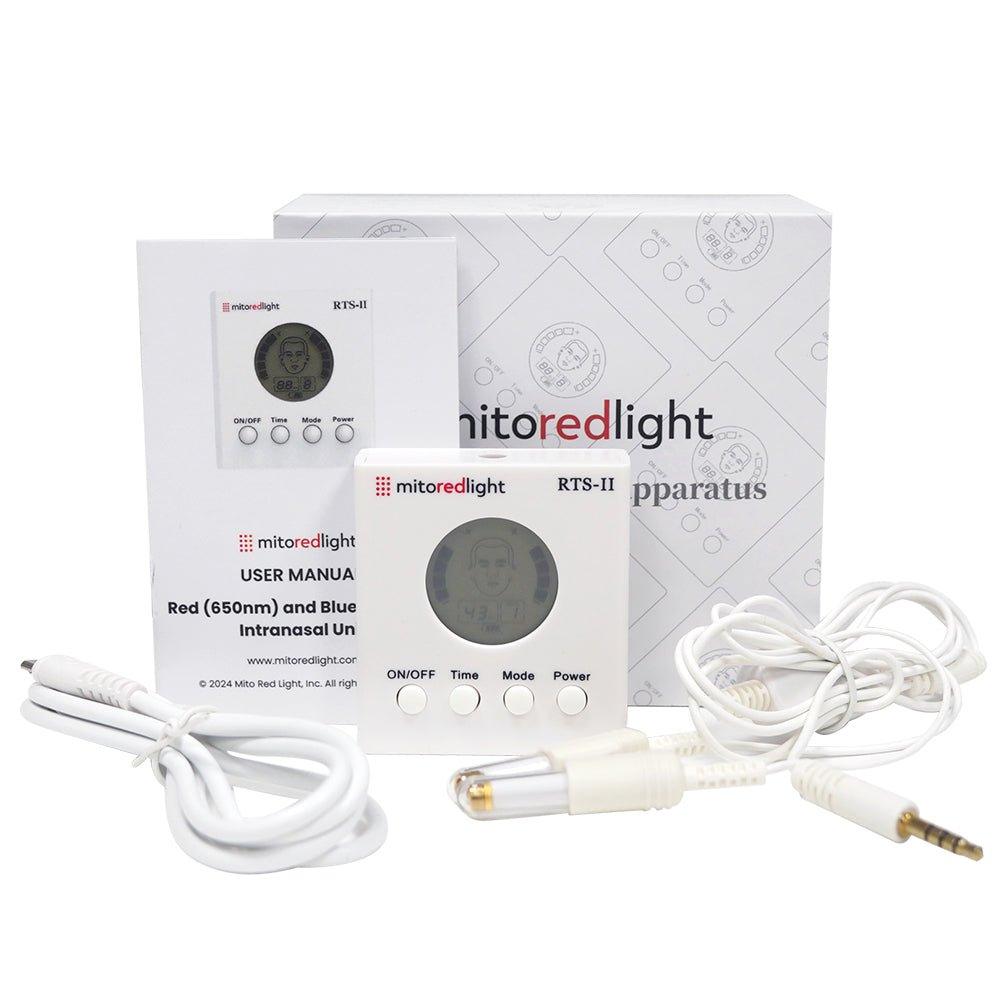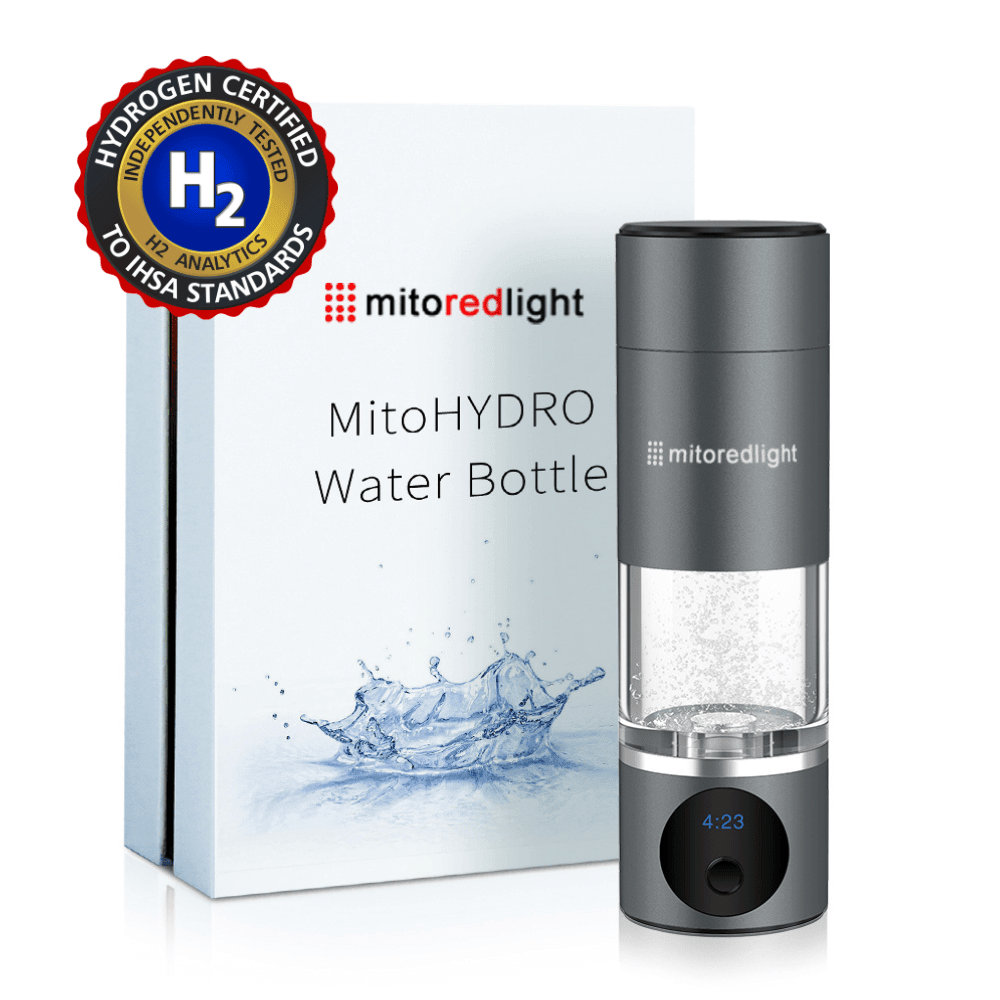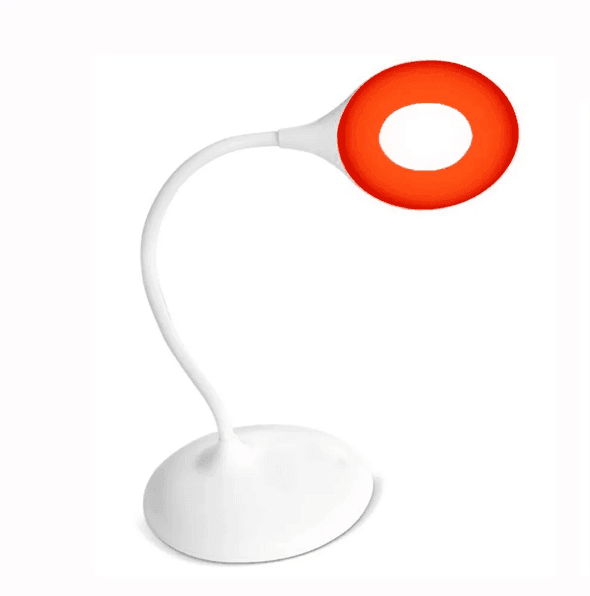Summary: The MitoBOOST offers both intranasal and in-ear light therapy, combining red, blue, and white LED attachments to support brain function, energy, wellness, and circadian health. This article explores the science and applications behind these distinct forms of light exposure and how they contribute to overall well-being.
Bringing Light Inside the Body
Light isn’t just for our eyes; it plays a crucial role in our biology, affecting everything from energy production to mood regulation and circadian rhythms. The body absorbs light in ways that are still being explored, with emerging therapies like intranasal and in-ear light therapy offering new, non-invasive ways to support overall health.
Why Light Is Foundational to Human Health
Light influences many of the body’s vital functions, from cellular energy to regulating biological rhythms and supporting immune health. Certain ranges of light in the electromagnetic spectrum are bioactive, influencing processes that help sustain balance and vitality. Recent research suggests that different wavelengths may help support health in ways that go far beyond simple skin-level applications, impacting everything from brain function to circulation and boosting the body’s natural defense mechanisms.
Moving Beyond Skin-Deep Therapy
The nasal cavity is uniquely effective at absorbing light, thanks to its dense network of capillaries and thin, permeable membranes. This allows red and near-infrared light to penetrate deeply, reaching the bloodstream and influencing key physiological processes.
-
The mucosal lining is highly vascularized, with 500–700 capillaries per square millimeter, facilitating light absorption and enhancing circulation
-
The olfactory region is closely connected to the brain, allowing light exposure to potentially influence mood, cognition, and overall brain function.
-
Red and near-infrared light may also potentially affect the rheological properties of the blood, improving blood flow, red blood cell flexibility, and overall circulatory health [1]
- Red and near-infrared light therapy may help support cell-free mitochondria in the bloodstream, which are involved in energy production and cellular function throughout the body, potentially contributing to overall systemic health [2,3]
- Blue light has been shown to have antimicrobial effects that may support general wellness [4]
Immune and Respiratory Benefits of Intranasal Light
The nasal cavity is a key entry point for bacteria and pathogens. Intranasal light therapy helps support immune and respiratory health by targeting its vascular tissues. Blue light can reduce microbial presence, while red light enhances circulation and oxygen delivery, promoting overall immune function and clearer airways. Together, they provide a natural, non-invasive way to support respiratory and immune wellness.

MitoBOOST Device Overview
The MitoBOOST is a modular light therapy device designed to deliver single or dual-wavelength treatment to support sinus health, immune function, and overall well-being. With red and blue light for targeted benefits in the nasal cavity, along with potential systemic effects, and white light for mood and circadian support, it offers a customizable approach to wellness.
Modular Design and Attachment Options
The MitoBOOST device comes with interchangeable attachments to suit different health goals. The modular design allows you to seamlessly swap out components based on your needs, ensuring targeted treatment for both respiratory health and brain function.
Intranasal LED Attachment with 450 nm Blue and 650 nm Red Light
The device uses intranasal LEDs with 450 nm blue light to help sanitize the nasal cavity, reducing microbial presence and supporting immune health. The 650 nm red light enhances circulation, boosts oxygenation, and reduces inflammation, contributing to better sinus health and overall systemic wellness.
-
Microbial sanitization of the nasal cavity for general wellness with blue light
-
Boosting immunity, reducing inflammation, and supporting circulatory health with red light
Additionally, the MitoBOOST offers an attachment with 650 nm red light in both probes. This option delivers faster, more targeted red-light therapy, focusing on immunity, inflammation, and circulatory health, without the addition of blue light, for a quicker and more efficient treatment.
White Light Earbud Attachment for Circadian and Mood Support
The MitoBOOST’s white light earbud attachment delivers white light to the ear canal, supporting circadian rhythm regulation and mood balance. This non-invasive therapy helps promote better sleep, enhances alertness, and can assist in adjusting to new time zones or managing seasonal mood shifts. Convenient and easy to use, the earbud attachment is a perfect addition for those seeking to optimize their daily energy levels and overall well-being.
How Red Light Supports Cellular Energy and Circulation
Intranasal red light at 650 nm stimulates the mitochondria, enhancing ATP production and supporting cellular functions. This increase in energy helps improve circulation and oxygen delivery throughout the body. Red light therapy may also promote vasodilation by enhancing nitric oxide signaling, which relaxes blood vessels and improves blood flow. This mechanism, involving nitric oxide disassociation from cytochrome c oxidase and the release of extracellular vesicles, can help reduce inflammation, support vitality, and aid recovery from minor injuries[5].

In-Ear Light Therapy and Circadian Regulation
Circadian rhythms are the body’s natural 24-hour cycles that regulate essential processes like sleep, mood, and energy. These rhythms are most strongly influenced by light, which helps synchronize the body’s internal clock. One promising approach to improving circadian health is transcranial bright light therapy through the ear canal. This method involves delivering light directly to brain regions involved in circadian regulation, offering a unique way to optimize sleep-wake patterns, enhance mood, and boost alertness. This therapy shows great potential for improving conditions like jet lag, shift work fatigue, and general circadian misalignment.
How Light Through the Ears Influences the Brain
Transcranial bright light therapy through the ear canal is an exciting new method for influencing the brain’s circadian rhythms. This approach leverages the light-sensitive tissues in the ear, which are connected to neural pathways involved in regulating sleep, mood, and alertness. While the science is still evolving, early studies show that this method could provide an effective way to optimize the body’s internal clock, improve mood, and help alleviate sleep-related disorders.
Jet Lag, Shift Work, SAD, and Circadian Entrainment
For those dealing with jet lag, shift work, or Seasonal Affective Disorder (SAD), transcranial bright light therapy could offer a valuable tool for realigning the body’s internal clock. Light exposure helps synchronize the circadian rhythm to the external environment, aiding in the recovery from disruptions caused by time zone changes or irregular work schedules. The method also shows promise in alleviating the symptoms of SAD by boosting serotonin levels and improving mood during the darker months of the year. As the research on in-ear light therapy grows, it may provide an effective, non-invasive solution for optimizing circadian entrainment and restoring balance to sleep and energy patterns [6].
Mood, Energy, and Sleep Balance
Transcranial bright light therapy through the ear canal may help regulate the brain’s natural rhythms that influence mood, energy, and sleep quality. Morning light exposure is known to suppress melatonin, the hormone that promotes sleep, helping the body transition to wakefulness. Early research suggests that in-ear light therapy may enhance alertness and mood without significantly altering melatonin levels, indicating that it may act through alternative neural pathways to support circadian balance [6].
A clinical study found that overworked employees who received in-ear light exposure reported better sleep quality and reduced depressive symptoms, suggesting its potential to ease fatigue and improve well-being in stressful environments [7]. Broader research also shows that bright light influences neural circuits and hormones tied to sleep and emotional regulation, reinforcing its role in promoting energy and mood stability [8].
Key Takeaways:
-
Transcranial bright light therapy involves delivering light through the ear canal to stimulate neural pathways responsible for circadian regulation
-
The ear canal's light-sensitive tissues may contain photoreceptors that help regulate mood, sleep, and alertness
-
Research has shown that light therapy via the ear canal can improve mood and energy, particularly for individuals with Seasonal Affective Disorder (SAD)
-
This method holds potential for optimizing sleep-wake cycles and alleviating issues like jet lag, shift work fatigue, and circadian misalignment

Using MitoBOOST in Practice
The MitoBOOST is designed for flexibility, allowing you to customize each session based on your wellness goals. Whether you’re supporting clear breathing, preparing for restful sleep, or aligning your circadian rhythm during travel, consistent use and the right attachment can help you get the most out of your sessions.
Choosing the Right Attachment
Each attachment is created for a specific purpose. The intranasal adapters combine red and blue light for immune and respiratory support, while the in-ear white light attachment focuses on circadian rhythm regulation and mood balance. Select the attachment that aligns with your current needs to support daily energy, seasonal comfort, or better sleep.
Supporting Clear Breathing and Comfort During Seasonal or Travel Changes
Seasonal shifts, dry environments, and air travel can impact sinus comfort. The intranasal red and blue light attachments help maintain clear airways by combining the circulation support of red light with the natural antimicrobial properties of blue light. Regular sessions can help promote easier breathing and greater comfort when environmental changes occur.
Promoting Clear Breathing Before Sleep
Using the dual red probe attachment in the evening can help open nasal passages and support relaxed breathing before bed. The 650 nm red light enhances circulation in the nasal mucosa and may support immune defenses by boosting the bactericidal activity of phagocytes. The dual-probe design delivers light to both nasal passages at once, providing faster, more efficient red-light exposure that helps reduce swelling, ease congestion, and improve airflow for a calmer night.
In-Ear Sessions for Circadian Wellness and Jet Lag Recovery
Morning or early day use of the white light earbuds supports the body’s natural circadian rhythm and promotes alertness. When adjusting to a new time zone, using the MitoBOOST at the local morning hour helps the body adapt more easily. The earbuds deliver bright white light directly to the ear canals, stimulating the brain regions that regulate sleep and energy. Consistent use can ease travel fatigue, improve daytime focus, and support deeper, more restful sleep at night.
Understanding Near Infrared Light
Near-infrared (NIR) light occupies the range between roughly 700 and 1200 nanometers, sitting just beyond the visible red portion of the light spectrum. Although invisible to the human eye, NIR light has longer wavelengths than blue or red light, allowing it to penetrate more deeply into biological tissues. This deeper reach enables interaction with cells, blood vessels, and neural structures, making NIR a valuable part of photobiomodulation research. Its ability to deliver light energy below the skin’s surface supports ongoing exploration into circulation, recovery, and brain health.
MitoMIND and Near Infrared Light for Brain Health
The MitoMIND intranasal device features dual 1070 nm near-infrared LEDs that deliver light through the nasal cavity for deeper tissue reach. This wavelength sits within the 950 to 1100 nm optical window, where reduced scattering allows for improved light delivery to deeper biological layers, supporting potential benefits for circulation and overall brain function [9].
-
Delivers focused 1070 nm near-infrared light through the nasal cavity to reach deeper circulatory and neurological structures
-
Supports oxygenation and microvascular function that may influence brain metabolism and cellular energy
-
Complements red and blue intranasal wavelengths used in MitoBOOST for whole-body and systemic support
1070 nm NIR for Deeper Brain Support
The 1070 nm wavelength falls within a high-transmission near-infrared range that allows for enhanced depth and interaction with biological tissues. This property makes it well-suited for applications involving neural and vascular health.
-
Sits within the 950–1100 nm optical window, where reduced scattering improves light propagation through tissue
-
May help promote cerebral blood flow and support mitochondrial activity linked to cognitive performance
-
Provides a deeper-penetrating wavelength that enhances the reach of intranasal photobiomodulation, extending its benefits beyond surface circulation
Key Takeaways
Light is an essential part of human biology, influencing everything from cellular energy to mood and circadian rhythm. The development of internal light therapy through the nose and ears represents a growing movement toward more precise, accessible wellness tools.
MitoBOOST brings targeted red and blue light to the nasal cavity and white light to the ear canal, supporting circulation, comfort, and healthy biological rhythms.
MitoMIND expands on these principles by using near-infrared light at 1070 nm, delivering deeper energy through the nasal cavity to support brain health and cognitive vitality.
Together, these innovations highlight how light-based technologies are moving beyond skin-level applications, helping people integrate scientifically informed wellness practices into daily life.
As understanding of light’s role in human health continues to expand, tools like MitoBOOST and MitoMIND make it easier to bring that science home, shining new light on how we support our minds and bodies.

References:
1. Walski, T., et al. Near‑infrared photobiomodulation of blood reversibly inhibits platelet reactivity and reduces hemolysis. PubMed (2022). Available at: https://pubmed.ncbi.nlm.nih.gov/35260751/
2. Jansen, F., et al. Characterization and origins of cell-free mitochondria in healthy humans. Mitochondrion (2020). Available at: https://www.sciencedirect.com/science/article/pii/S1567724920301719?utm_source=chatgpt.com
3. Johnstone D.M., Hamilton C., Gordon L.C., Moro C., Torres N., Nicklason F., Stone J., Benabid A.L., Mitrofanis J. Exploring the Use of Intracranial and Extracranial (Remote) Photobiomodulation Devices in Parkinson’s Disease: A Comparison of Direct and Indirect Systemic Stimulations. Journal of Alzheimer’s Disease. 2021;83(4):1399‑1413. DOI:10.3233/JAD‑210052. Available at: https://pubmed.ncbi.nlm.nih.gov/33843683/
4. Halstead F.D., Thwaite J.E., Burt R., Laws T.R., Raguse M., Moeller R., Webber M.A., Oppenheim B.A. Antibacterial Activity of Blue Light against Nosocomial Wound Pathogens Growing Planktonically and as Mature Biofilms. Applied and Environmental Microbiology. 82(13):3290‑3300 (2016). DOI:10.1128/AEM.00756‑16. Available at: https://pmc.ncbi.nlm.nih.gov/articles/PMC4907187/
5. Red light stimulates vasodilation through extracellular vesicle trafficking. Journal of Photochemistry and Photobiology B: Biology. 2021;220:112212. Available at: https://www.sciencedirect.com/science/article/abs/pii/S1011134421000919
6. Jurvelin, H., Takala, T., Nissilä, J., Timonen, M., Rüger, M., Jokelainen, J., & Räsänen, P. (2014). Transcranial bright light treatment via the ear canals in seasonal affective disorder: A randomized, double-blind dose-response study. BMC Psychiatry, 14, 288. https://doi.org/10.1186/s12888-014-0288-6
7. Kinoshita, T., Tanigawa, T., Maruyama, K., & Morimoto, K. (2020). The effects of bright light treatment via ear canals on quality of sleep and depressive mood among overworked employees: A randomized-controlled clinical trial. Work, 67(2), 323–329. https://doi.org/10.3233/WOR-203282
8. Yaodong, C., Zhang, Y., Feng, G., Lei, Y., Liu, Q., & Liu, Y. (2023). Light therapy for sleep disturbance comorbid depression in relation to neural circuits and interactive hormones—A systematic review. PLOS ONE, 18(9), e0286569. https://doi.org/10.1371/journal.pone.0286569
9. Chen, X., Li, X., Su, R., Zeng, S., Wang, L. V., & Shi, L. (2022). Functional near-infrared-II window imaging of cortical functional connectivity in the mouse brain. Science Advances, 8(46), eabq3211. https://www.science.org/doi/10.1126/sciadv.abq3211
DISCLAIMER: Mito Red Light devices are Class II wellness devices aimed at affecting the body through supporting cellular function. The information provided in this article and on this site is for educational purposes only and is not intended to imply effectiveness of Mito Red Light devices for any specific application. The information provided in this article and on this site is not intended to diagnose, treat, cure, or prevent any disease, is not a substitute for consultation with a licensed medical provider and should not be construed as medical advice. Click here to read our article on potential contraindications of red light therapy..
